I’m an avid tennis player myself, who has suffered from serious tennis elbow.
I’ve even watched my mom (another competitive tennis player) get cortisone shots and surgery on her elbow. 🙁
So, I know how painful and uncomfortable tennis elbow can be. If anyone can empathize, its me.
Tennis elbow can really limit you on a daily basis if it gets bad. Simple tasks, such as opening doors and lifting coffee mugs become difficult, as you are fighting pain each time you attempt them.
And if you also are a tennis player, then you know that once your tennis elbow pain reaches a certain point, you can’t play anymore. Bummer! I don’t know about you, but I can’t stand being off the court!
There are a number of tennis elbow exercises that you can do to prevent injuries as well as heal and recover from injury. I will go over both types of tennis elbow exercises in this overview, both preventative and strengthening/recovery exercises.
Without further ado, I would like to share with you this complete overview of tennis elbow. Inside this guide you will find everything you could possibly want to know about tennis elbow and tennis elbow exercises.
In addition to the overview you see here, I created a comprehensive downloadable PDF for you to take with you. That’s right, a tennis elbow exercises pamphlet you can print and keep with you in your tennis bag or to have at your PT clinic. It is perfect for sharing with tennis students and physical therapy patients. You’re welcome 😉
Tennis Elbow & Exercises for Therapy: The Complete Overview
Contents
The Guide
What Is Tennis Elbow?
Tennis Elbow (Lateral Epicondylitis)
- noun: A painful inflammation of the tissue surrounding the outer side of the elbow, commonly caused by strain from playing tennis and other sports.
“Tennis elbow” is the term that is commonly used to describe a condition that is caused by overusing the hand, forearm and arm muscles that result in a person having pain in the elbow. To get this, you don’t necessarily have to play tennis. However, the term does come from the fact that many tennis players do develop this as a significant problem.
The injury may also be incurred from performing a repeated motion or movement, your particular technique during activities, or using poorly sized/weighted equipment.
Either a subtle or abrupt injury of the tendon and muscle area around the outer part of the elbow is what causes tennis elbow. The specific area that tennis elbow involves is the area where the forearm’s tendons and muscles attached to the elbow’s outside bony area (referred to as the lateral epicondyle). The condition might be referred to as lateral epicondylitis by your doctor.
“Golfer’s elbow” is another common term used for the same process that occurs on the inner part of the elbow. This may be called medial epicondylitis by your doctor. The posterior or back part of the elbow can also be affected by overuse injury.
| Lateral Epicondylitis (Tennis Elbow) | Medial Epicondylitis (Golfer’s Elbow) |
|---|---|
wrist extension is painful & resisted | wrist flexion is painful & resisted |
radial deviation is painful & resisted (bending wrist toward pinky) | forearm pronation is painful & resisted (palm facing downward) |
palpation tenderness of the lateral epicondyle | palpation tenderness of the medial epicondyle |
It is more common for tennis elbow to affect individuals in their dominant arm (so pain would be experienced in the right arm by a right-handed person). However, it can also occur in the non-dominant arm.
Dr. Jeffrey Anthony offers a 6 video series on tennis elbow. The first video in the series does a really great job answering the question, what is tennis elbow. Go ahead, give it a watch!
What Are The Main Symptoms Of Tennis Elbow?
The following are some of the major symptoms of tennis elbow:
- Pain increases slowly around the outer part of the elbow. Pain might develop suddenly, but this happens less often.
- Pain increases when squeezing objects or shaking hands.
- Pain becomes worse when moving the wrist forcefully or stabilizing it. Examples include using basic utensils like knife and fork or a toothbrush, opening jars, using tools or lifting objects.
- Holding, gripping, and pinching objects is difficult
- Tightness of forearm muscle and insufficient strength
- Acute tenderness around the muscles of the lateral or medial elbow
How Tennis Elbow Is Diagnosed
Blood tests cannot diagnose tennis elbow and x-rays rarely do either. It is usually diagnosed through the description of your pain that you give to your doctor in addition to specific findings after a physical exam is conducted.
There many other conditions that might cause pain in the elbow area. That’s why it’s very important for you to visit your doctor so that the correct diagnosis is made. Your doctor can then prescribe the right treatment.
Usually medical means are used for successfully treating tennis elbow- like cortisone injections, topical cortisone gels, topical anti-inflammatory gels, forearm bracing for resting the tendons and physical therapy. Rarely is surgery needed.
The specific tennis elbow treatment method that is prescribed will depend on various factors, including severity of pain, medical history, overall health, other drugs the person is taking and age. Treatment goals are to reduce inflammation or pain, decrease abuse and stress on the injured elbow and to promote healing.
Who Is Affected By Tennis Elbow?
From 1-3% of the overall population is affected by tennis elbow and up to 50% of all tennis players at some point in their playing careers. However, when it comes to the total number of tennis elbow diagnoses, less than 5% actually relate to playing tennis.
More men are affected by tennis elbow than women. People of all ages can be affected, how individuals between 30 and 50 years old are affected the most.
- 3+ Weekly number of times an actual tennis play gets tennis elbow
- 35+ This represents the age group most commonly affected by tennis elbow
- 50% Amount of recreational tennis players who suffer from tennis elbow
Although it is more common for tennis players to be affected by tennis elbow, other athletes and individuals participating in work or leisure activities requiring repetitive hand, wrist, elbow and arm movement are also affected, especially while gripping something tightly. Examples include baseball players, golfers, bowlers, landscapers, gardeners, office or house cleaners (due to all of the scrubbing, sweeping and vacuuming), assembly line workers, mechanics and carpenters.
How Inflammation and Pain Are Reduced In Tennis Elbow
Try the following to reduce inflammation and pain of tennis elbow:
- Apply ice to the area that is affected.
- Rest and avoid activities that cause pain.
- A cortisone-type medication can either be injected into the area that is sore by your physician or you can apply it topically.
- Take a nonsteroidal anti-inflammatory drug (NSAID) like Ibuprofen.
What Can I Do To Facilitate My Tennis Elbow To Heal?
This step starts a few weeks after your tennis elbow pain has either been eliminated or reduced. You should do specific physical therapy exercises that will strengthen and stretch the tendons and muscles around your injured elbow. Avoid any activities that might aggravate the pain.
Tennis Elbow Exercise Therapy
Let’s discuss some of the best tennis elbow exercises. There are quite a few different tennis elbow exercises, some better than others. But some of them are for different purposes, such as recovery vs. prevention. In this guide we will discuss the best tennis elbow exercises and each ones specific purpose.
People respond differently to the various exercises for tennis elbow. So trying out a few to see which ones help improve your injury the most is important.
Tennis Elbow Exercises for Prevention
Perhaps you are reading this before you incur the painful injury that is tennis elbow. Hopefully that is the case, and if so you may want to consider performing some of these simple tennis elbow exercises for prevention so that you don’t suffer the injury in the future. Let’s go over the two main ways to prevent tennis elbow: increasing strength and flexibility in your forearms.
Tennis Elbow Stretches
The best tennis elbow exercise for prevention is stretching. We will go over two easy stretches that you can do anywhere, the “Wrist Flexor stretch” and the “Wrist Extensor Stretch”. These stretches will stretch the forearm muscles increasing flexibility throughout the tendons in your arm.
Wrist Flexor Stretch (bottom of forearm): With your injured arm, extend it out in front of you palm facing the floor. (You can be seated or standing) Bend your wrist so that your fingers point up towards the ceiling. With your other hand, place your palm on the tips of your injured arm’s fingers and pull them back towards your body, stretching your muscles and tendons. You should feel the stretch on the underside of your forearm.
Wrist Extensor Stretch (top of forearm): This stretch is a reversed version of the above wrist flexor stretch. After performing the wrist flexor stretch, keep the same position while relaxing the stretch by releasing your fingers from being pulled back. Now bend your wrist in the opposite direction so that your fingers are pointing down towards the floor. Now with your other arm that is not injured place your palm over the back of your injured arm’s hand and pull towards your body stretching the muscles and tendons in your forearm. This time you will feel the stretch in the top of your forearm.
Here, watch this quick 45 second video to see the stretches for yourself:
These stretches are not just for preventing tennis elbow, they are also very effective for recovery and rehab.
Tennis Elbow Strengthening Exercises
No, we definitely are not about to talk about the type of weightlifting cross fitters, body builders, or other athletes perform. These are simple lightweight exercises you can do anytime anywhere to strengthen the small muscles in your forearm so that they don’t incur injury in the future.
For these curling exercises, use a small hand weight that weighs 1lb – 5lbs.
Wrist Curls (10 repetitions): Hold the weight in the hand of your injured arm. Sit down and rest your injured forearm on your thigh positioned so that the weight is hanging over the front of your knee. Your palm should be facing toward the ceiling and you now may begin curling the weight up towards the ceiling as far as feels comfortable. Then reverse this motion letting the weight go back down towards the floor. Make sure you raise and lower the weight in a controlled motion. Perform 10 repetitions.
Reverse Wrist Curls (10 repetitions): For these you simply reverse the direction your palm is facing, this time you want to turn your hand over so that your palm is facing the floor. Your forearm should still rest on your thigh, and now you may reverse curl the weight up towards the ceiling. Make sure you raise and lower the weight in a controlled motion. Perform 10 repetitions.
Tennis Ball Squeezes (3 sets of 25): It’s only fitting that you would use a tennis ball to prevent tennis elbow. Holding a dead or flat (old used) tennis ball in the hand of your injured arm, squeeze the ball. Perform 25 repetitions and then rest, repeating 3 sets total. (The tennis ball squeeze isn’t just for prevention; it is also a great tennis elbow recovery or rehab exercise to perform as well.)
Tennis Elbow Exercises for Recovery or Rehabilitation
Quit a few of the exercises we have mentioned above are also good for recovery or rehabbing your tennis elbow. The main difference between prevention and recovery exercises is that the prevention exercises may involve some weight to help build strength whereas the recovery exercises focus on repetition and no weight.
The objectives of recovery or rehab exercises for tennis elbow are:
- Control pain by reducing inflammation
- Determine the cause of your injury and address it
- To increase the load through the tendon gradually over time
Here are some great rehab and recovery exercises for tennis elbow:
- Tennis Elbow Exercises Using a Thera Band Flexbar
- Tennis Ball Squeezes
- The Hammer Method for Tennis Elbow
- Wrist Flexor Stretch (bottom of forearm)
- Wrist Extensor Stretch (top of forearm)
Also, sports massage therapy can be extremely effective for tennis elbow. You can do this yourself by massaging the area in pain. Here is how.
Sports Massage Therapy for Tennis Elbow: Placed two fingers directly on top of the area in pain and apply firm pressure. Rub the tissue while continuing to apply pressure. Do this for about 5 minutes.
Tips for the Tennis Player Who Wants to Play Through the Pain of Tennis Elbow
Since I have suffered from serious tennis elbow many times and am an avid competitive tennis player who can’t stand being kept off the court, I want to share some tips for playing tennis with tennis elbow.
Keep in mind I don’t recommend playing tennis when you have this injury, because rest is the most important thing you can do for recovery. However, I understand for the tournament player they may find themselves in situations where they really want to play at times. We only live once, right?
Here are some tips for playing through the pain:
- Check the tension of your racket strings as well as the weight and balance of your racket. Looser strings that are thinner tend to be softer on your arm. High tension and polyester, or other thick durable strings, will be much harder on your arm causing more damage and pain. This article goes into some more depth about racket weight and balance as well as string tension and material adjustments for players with tennis elbow.
- Review your grip of the racket. Are you choked up just enough on the handle so that a few millimeters of grip are hanging a little below your palm? Or is the bottom of the racket grip wrapped inside of your palm? Try choking up a bit higher on your racket when you have tennis elbow, this can help you stabilize your racket more reducing vibrations from mis-hitting the ball.
- Focus on eye hand coordination to make better contact with the ball. Framing or shanking the ball and mis-hitting causes vibrations throughout your racket that are extremely painful for your injured tendon. Hitting the sweet spot will feel much smoother on your elbow.
Tennis Elbow & Exercises at the Gym (Things to avoid)
You don’t need any gym equipment when performing exercises to treat or prevent tennis elbow. In fact, if you frequent the gym to lift weights or workout and are experiencing tennis elbow, then you may want to review your workout routine. Certain exercises in your routine may be aggravating your tennis elbow and making it worse.
Here are some exercises to avoid when you have tennis elbow as well as some general tips for the fitness freak with tennis elbow:
- Take a week off – When you first develop tennis elbow it is important to rest and ice your arm. Take a week off from the gym after you first develop tendinitis in your elbow.
- Talk to your trainer – A certified physical trainer can tell you good workouts that are safe to perform when you have tennis elbow and also tell you the ones to avoid.
- No Dumbbells – Avoid using dumbbells. Dumbbells require using a further range of motion which is typically a good thing but can further stretch and injure and already damaged tendon. Stick to barbells and machines when you have tennis elbow.
- No heavy weights – In reality, weightlifting is usually not a good idea when you have tennis elbow but if you can’t stay out of the gym then focus on higher repetition and lower weight. Heavy weight can strain and further damage the tendon.
Here is a 14 minute video that goes into depth discussing exercises to avoid when you have tennis elbow.
Tennis Elbow Exercises at Home
The great thing about tennis elbow is you have no excuses for not recovering. You can perform any and all tennis elbow exercises at home.
Here are the best tennis elbow exercises that we talk about and show you how to do in this guide, try them at home:
- Tennis Elbow Exercises Using a Thera Band Flexbar
- Tennis Ball Squeezes
- The Hammer Method for Tennis Elbow
- Wrist Flexor Stretch (bottom of forearm)
- Wrist Extensor Stretch (top of forearm)
- Tennis Elbow Exercises Using a Broomstick
- Tennis Elbow Exercises Using a Rubber Bar
- Wrist Curls
- Reverse Wrist Curls
Tennis Elbow Exercise Videos
There are tons (about 33,100 to be exact) of tennis elbow exercise videos on YouTube. We have already shared a few of the best ones here in this guide.
I also like to recommend this mini-series of videos on tennis elbow.
Tennis Elbow Exercise Equipment
When it comes to tennis elbow, there are many different exercises you can do and as a result there are quite a few different tennis elbow exercise equipment options. We will go over some of the exercise equipment that we have found to be useful for exercise therapy.
Tennis Elbow Exercises Using a Hammer
I know, it sounds weird, tennis elbow exercises using a hammer? But a standard hammer is actually a good weight and shape to perform tennis elbow exercises with.
The Hammer Method for Tennis Elbow: Sit down and rest your elbow on a flat surface holding the hammer straight out and rotating your hand in a motion called supination.
This video is thanks to Madden PT.
Tennis Elbow Exercises Using a Thera Band Flexbar
Thera Band Flexbars work great for treating tennis elbow and they have many more applications as well. The exercise for tennis elbow is simple; it involves twisting the foam bar in your hands. A regimen of 3 sets of 15 daily for six weeks is recommended. About 75% – 80% of patients on this regimen see dramatic results.
Tennis Elbow Exercise w/ Thera Band Flexbar: With your arms out, gripping the Flexbar in both hands with your palms facing down. Twist the flex bar. You will notice the muscles in your forearm and around your elbow working.
Tennis Elbow: Step-By-Step Instructions For Treating Elbow Pain Using A Flexbar (Tyler Twist)
This video is thanks to Dr. Daniel P Bockmann, DC
Tennis Elbow Exercises Using a Rubber Bar
So you heard about this rubber bar thing and using it for tennis elbow exercises? Well, the rubber bar is actually a Thera Band FlexBar. You should check out the “Tyler Twist” exercise done with the FlexBar, it is highly recommended. The exercise was originally developed by Dr. Tim Tyler, a Physical Therapist in New York. The exercise is great for both golfers and tennis elbow.
Tennis Elbow Exercises Using a Broomstick
Wait what? A broomstick for exercising my tennis elbow? Yes.
A broomstick is a great object to use partially because you should have one already at your house. It also provides a good shape and weight for performing some specific tennis elbow exercises.
How Can I Decrease Abuse And Stress On My Tennis Elbow?
In order to help less continued abuse and stress on tennis elbow you can try the following:
- Use the right techniques and equipment on the job and in sports.
- For some people, using a counter-force brace, which is an elastic band that you wrap around your forearm right below your injured elbow, might help to relieve some of the pain.
- Avoid overusing the wrist and tight gripping.
- Pay close attention to what movements cause your pain, and avoid them as much as possible.
What Is The Outlook For People Suffering With Tennis Elbow?
Overall, 90-95% of individuals who have tennis elbow will recover and improve based on their prescribed treatment plan. However, approximately 5% of individuals won’t improve with conservative treatment methods and will require surgery for repairing the injured muscle-tendon part around the elbow. Of all individuals who have surgery, 80-90% experience return of strength and pain relief.
References
American Academy of Orthopaedic Surgeons: Tennis Elbow (Lateral Epicondylitis)
Nicholas Institute of Sports Medicine and Athletic Trauma: Physical Therapy Corner — Tennis Elbow
Wake Forest Baptist Health: Tennis Elbow: Stretches and Strengthening Exercises
Dr. Allan Mishra: Tennis Elbow Stretches
Orthopedic Center of Illinois: Lateral Epicondylitis (Tennis Elbow) Home Exercises

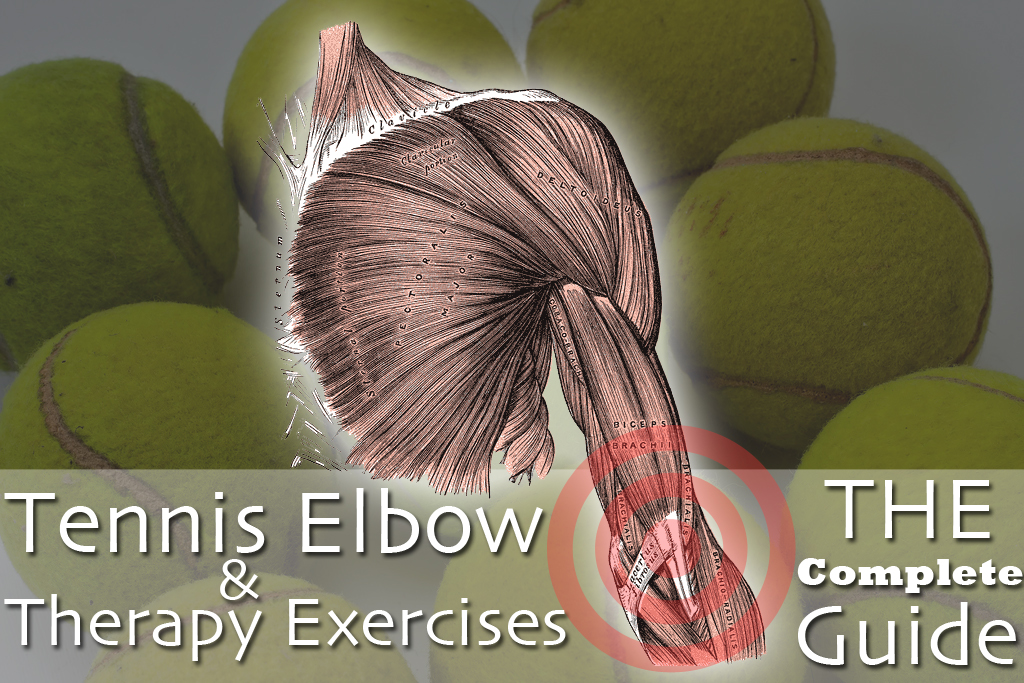
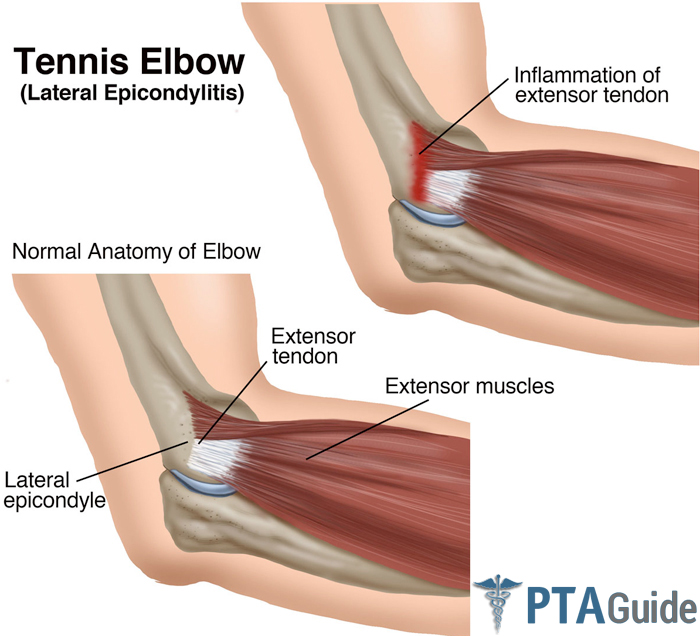
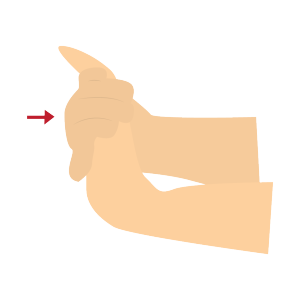
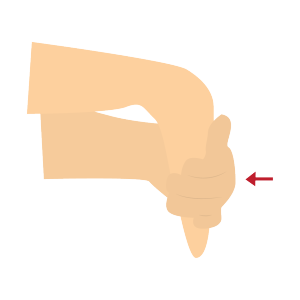

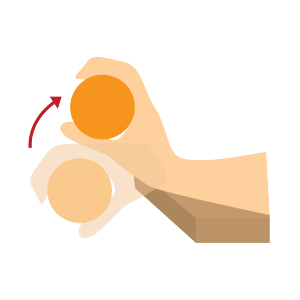
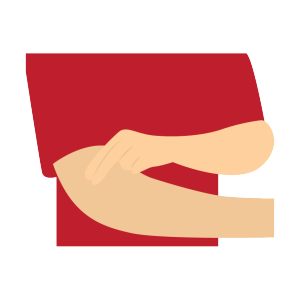
Thank you so much for this article–so many helpful tips here.